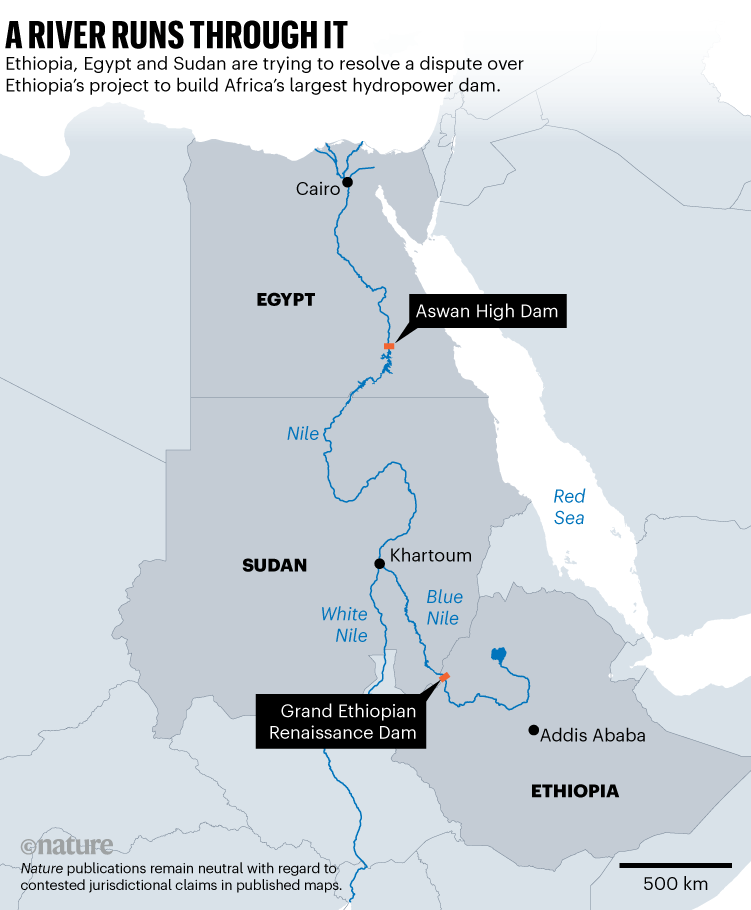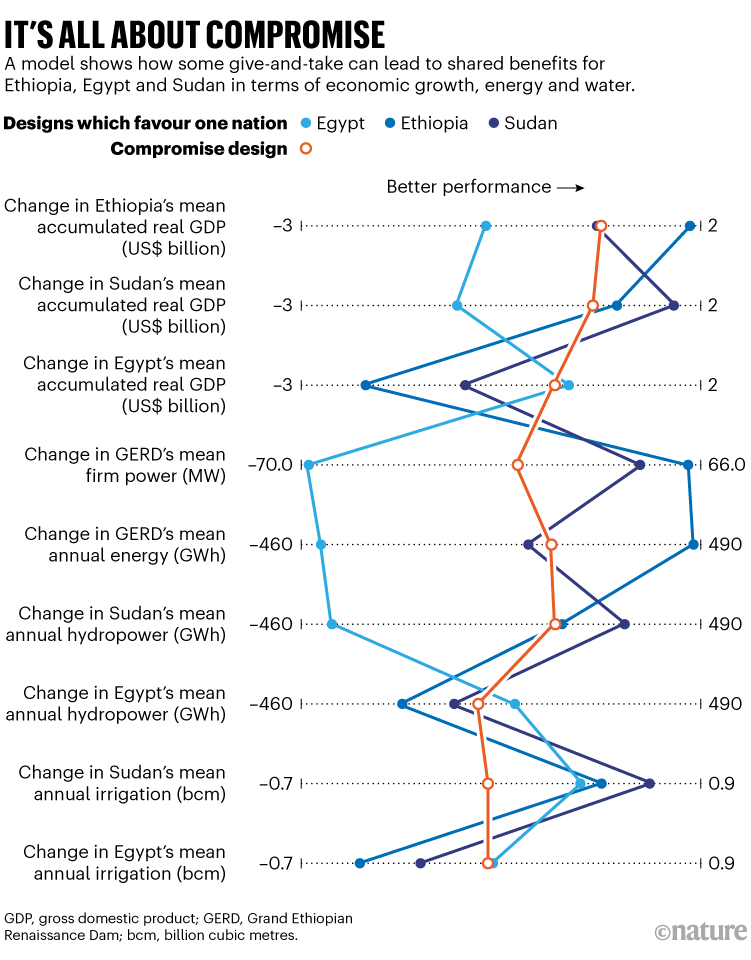[ad_1]
A team of environmental scientists has a proposal to end a long-running dispute between Egypt, Ethiopia and Sudan over Africa’s largest hydroelectric dam.
Ethiopia is several years away from completing the almost-US$5-billion Grand Ethiopian Renaissance Dam on the river Nile, which is intended to provide electricity to a country where two-thirds of its population lack access. The Egyptian government, however, is convinced that a mega dam on the Nile, which supplies 90% of Egypt’s fresh water, will create water scarcity, trigger food shortages and put its farmers out of work.

Mediation attempts are ongoing, but talks remain deadlocked. Now, a study shows how the three countries can make the dam work for all of them1.
The idea “is to incorporate cooperative behaviour between the countries”, says Mohammed Basheer, a water-resources economist and a co-author of the paper, published last month in Nature Climate Change. The study shows how each country can “help each other, look after each other, and look out for each other”, he adds. Basheer was based at the University of Manchester, UK, and is moving to the Humboldt University of Berlin.
Egypt, Ethiopia and Sudan have been trying and failing to resolve disagreements since the dam construction began in 2011. Disputes concern, among other things, the speed of completing the project and the volume of water to be released to drive the electricity-generating turbines once the dam is operational. Egypt wants less water to be released and more time before the dam is operational, but Ethiopia is pressing ahead.
Basheer and his colleagues modelled how climate change will affect Nile basin hydrology and the resulting impact this could have on each country’s economy. On the basis of these data, they used artificial intelligence to create scenarios for how the dam could operate (see graphic ‘It’s all about compromise’) to maximize economic benefits while adapting to the effects of climate change. However, they found that if the dam operated in the best interests of one country, the other two would have comparatively reduced benefits.
For example, a scenario where Ethiopia gains maximum hydropower means Egypt has less irrigation water. Alternatively, if Egypt maximizes its hydropower Ethiopia experiences energy losses.
The researchers are proposing a compromise scenario (the orange line) in which the three countries help each other out and still benefit. For example, when there’s a drought, Ethiopia should increase water flowing to Egypt; it can then cut back when rainfall picks up. The discourse around negotiations has focused on water volumes, when “they need to think about sharing the benefits”, Basheer says.

Source: Basheer, M. et al. Nature Clim. Change 13, 48–57 (2023).
The authors hope that their study will inform ongoing negotiations, which involve the African Union, the US government and the World Bank. According to Basheer, their study “doesn’t provide singular solutions, but it provides a set of optimized solutions that they can negotiate based on”.
The challenge is to actually get the three nations to accept that they will need to compromise, says Kevin Wheeler, a researcher who studies the Nile dam and is based at the University of Oxford, UK. “How do you get adversarial parties to adopt the outputs of a computer?” Wheeler asks. This is “the fundamental problem”, he adds.
The authors’ plan offers “a win–win solution for these countries,” says Sharaf Eldin Bannaga, a civil engineer at City College for Science and Technology in Khartoum, Sudan and the country’s former minister of infrastructure. “But they have to cooperate among themselves,” he adds.
[ad_2]
Source link

